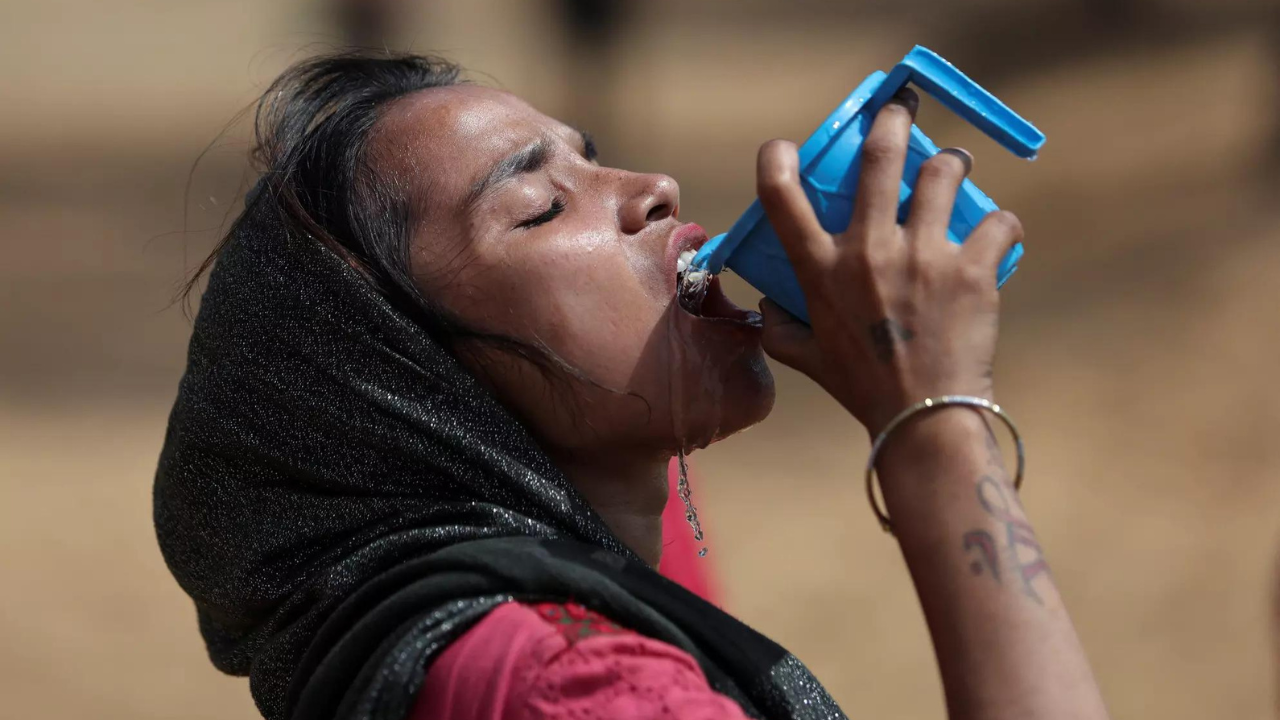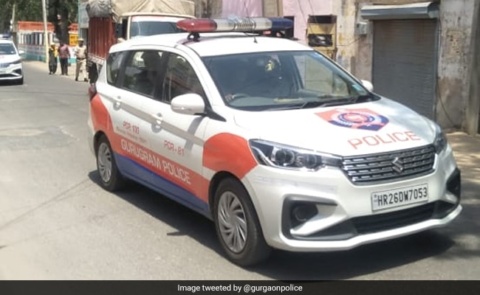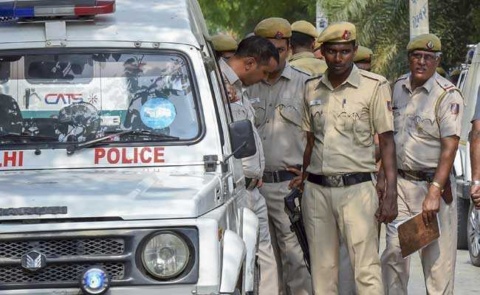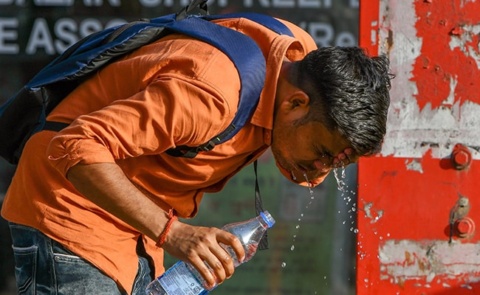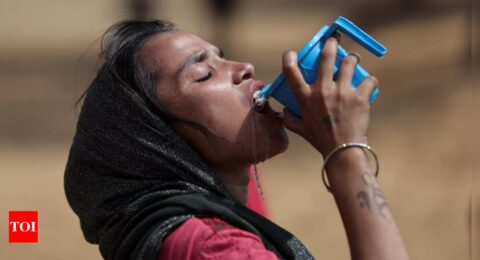
[ad_1]
Hyperlocal warning systems, vulnerability mapping of cities, and climate-resilient housing policies are some of the measures recommended by a “model heat action plan” commissioned by the National Disaster Management Authority (NDMA). Researchers recently submitted the model plan which aims to guide states and cities in formulating local action plans in the face of rising extreme heat.
Such heat action plans (HAPs) have proliferated in recent years, however assessments have found they vary widely in quality and implementation.Yet these plans will become more important with climate change expected to increase the number and duration of heatwaves in the coming decades.
Studies project heatwaves in India could reach the survivability limit by 2050, with significant impacts on labour productivity and health. Cities are especially at risk as heat-absorbing concrete buildings and roads raise local temperatures.
“Urban areas have become warmer and more complex,” says model plan author Rajashree Kotharkar, professor of architecture and planning at VNIT in Nagpur who has been studying urban heat for a decade. She adds, “We have a lot of traditional knowledge on how to live with heat, but our lifestyles have changed, and so has our environment.”
Kotharkar’s model plan seeks to fill some of the gaps in existing HAPs. Globally and in India, Kotharkar found most plans are crisis-oriented and driven by public health, with less focus on long-term planning or integrating heat action with policies around water or housing.
“When we talk about extreme heat, there is no quick fix,” says Kotharkar. “Emergency response is important, but when you have good medium- and long-term policies, the burden on emergency response will reduce.”
Many existing plans also treat the city as a “single entity”, however microclimates and socio-economic conditions can vary widely within a large urban area, she notes. In addition, monitoring and evaluation of measures were often missing from these plans.
The model plan recommends measures across sectors—public health, epidemiology, meteorology and urban planning—and over different time frames. “Heat has an impact on economy, energy, health, housing. So the response also has to be multisectoral,”says Kotharkar.
An important consideration is to ensure solutions do not have a negative impact on environment. Air conditioners, for instance, add to the carbon emissions that are causing global warming. Their use is expected to rise nine-fold in India by mid-century.
In the immediate to short-term, the plan recommends that cities implement emergency response measures including planning heat warning and public communication systems, and preparing health and civic infrastructure for the impact of heatwaves on people.
One key recommendation is that urban bodies conduct rapid vulnerability assessments to identify ward-level risk. For instance, areas with high population density, low vegetation, or slum housing are more at risk. “If you live in a tin-roof home, you are more exposed to heat stress,” Kotharkar says, adding cities should do more extensive risk mapping exercises over time.
In the medium-term, the plan urges cities to identify local heat thresholds to improve alert systems. The current heat alert system is based on broad temperature thresholds—37°C for coastal areas and 40°C for plains, for example. But some cities have begun to set their own thresholds based on local mortality data. Ahmedabad, for instance, issues its first alert at 41°C—the point at which deaths begin to climb, as per data. For coastal cities, humidity might be as important a factor as temperature, and needs to be factored into the heat thresholds.
“Studies have to be conducted by local or regional epidemiologists and meteorological departments to identify local thresholds and customise alerts,” says Kotharkar, adding that while mortality data is often used to set heat risk thresholds, morbidity or illness data would be better to use, if available.
In the long-run, combating heat is about better urban planning, the model suggests. That means investing in buildings that are designed to reduce energy consumption, as well as in expanding public transport and urban greenery, says Kotharkar. While some cities already have tree planting programmes, they are often not carried out scientifically in terms of planting the right trees and in the right places, she notes.“Urban planning matters because it is the built environment that directly affects the microclimate of the city,” she says.
Such heat action plans (HAPs) have proliferated in recent years, however assessments have found they vary widely in quality and implementation.Yet these plans will become more important with climate change expected to increase the number and duration of heatwaves in the coming decades.
Studies project heatwaves in India could reach the survivability limit by 2050, with significant impacts on labour productivity and health. Cities are especially at risk as heat-absorbing concrete buildings and roads raise local temperatures.
“Urban areas have become warmer and more complex,” says model plan author Rajashree Kotharkar, professor of architecture and planning at VNIT in Nagpur who has been studying urban heat for a decade. She adds, “We have a lot of traditional knowledge on how to live with heat, but our lifestyles have changed, and so has our environment.”
Kotharkar’s model plan seeks to fill some of the gaps in existing HAPs. Globally and in India, Kotharkar found most plans are crisis-oriented and driven by public health, with less focus on long-term planning or integrating heat action with policies around water or housing.
“When we talk about extreme heat, there is no quick fix,” says Kotharkar. “Emergency response is important, but when you have good medium- and long-term policies, the burden on emergency response will reduce.”
Many existing plans also treat the city as a “single entity”, however microclimates and socio-economic conditions can vary widely within a large urban area, she notes. In addition, monitoring and evaluation of measures were often missing from these plans.
The model plan recommends measures across sectors—public health, epidemiology, meteorology and urban planning—and over different time frames. “Heat has an impact on economy, energy, health, housing. So the response also has to be multisectoral,”says Kotharkar.
An important consideration is to ensure solutions do not have a negative impact on environment. Air conditioners, for instance, add to the carbon emissions that are causing global warming. Their use is expected to rise nine-fold in India by mid-century.
In the immediate to short-term, the plan recommends that cities implement emergency response measures including planning heat warning and public communication systems, and preparing health and civic infrastructure for the impact of heatwaves on people.
One key recommendation is that urban bodies conduct rapid vulnerability assessments to identify ward-level risk. For instance, areas with high population density, low vegetation, or slum housing are more at risk. “If you live in a tin-roof home, you are more exposed to heat stress,” Kotharkar says, adding cities should do more extensive risk mapping exercises over time.
In the medium-term, the plan urges cities to identify local heat thresholds to improve alert systems. The current heat alert system is based on broad temperature thresholds—37°C for coastal areas and 40°C for plains, for example. But some cities have begun to set their own thresholds based on local mortality data. Ahmedabad, for instance, issues its first alert at 41°C—the point at which deaths begin to climb, as per data. For coastal cities, humidity might be as important a factor as temperature, and needs to be factored into the heat thresholds.
“Studies have to be conducted by local or regional epidemiologists and meteorological departments to identify local thresholds and customise alerts,” says Kotharkar, adding that while mortality data is often used to set heat risk thresholds, morbidity or illness data would be better to use, if available.
In the long-run, combating heat is about better urban planning, the model suggests. That means investing in buildings that are designed to reduce energy consumption, as well as in expanding public transport and urban greenery, says Kotharkar. While some cities already have tree planting programmes, they are often not carried out scientifically in terms of planting the right trees and in the right places, she notes.“Urban planning matters because it is the built environment that directly affects the microclimate of the city,” she says.
[ad_2]
Source link
